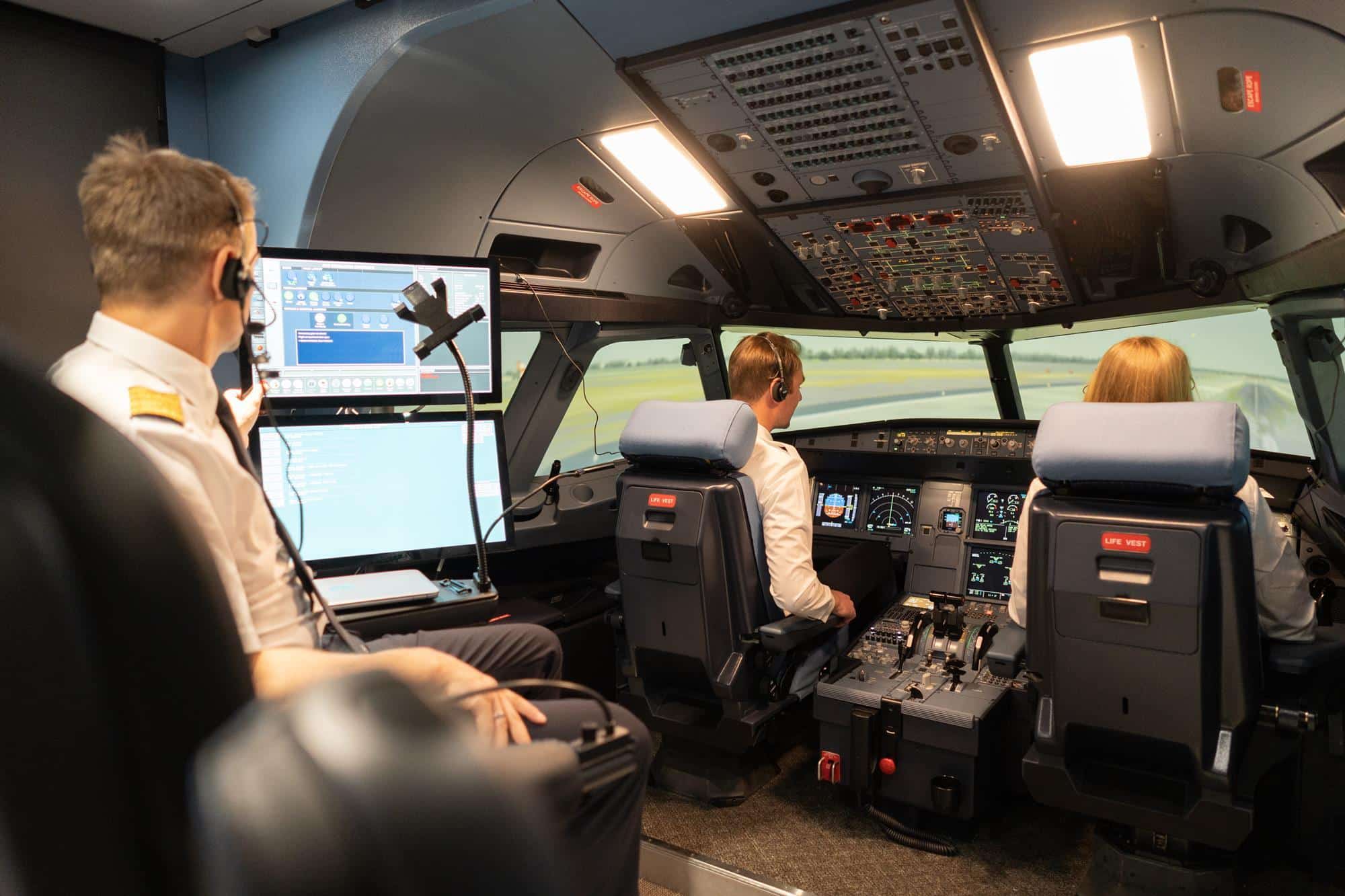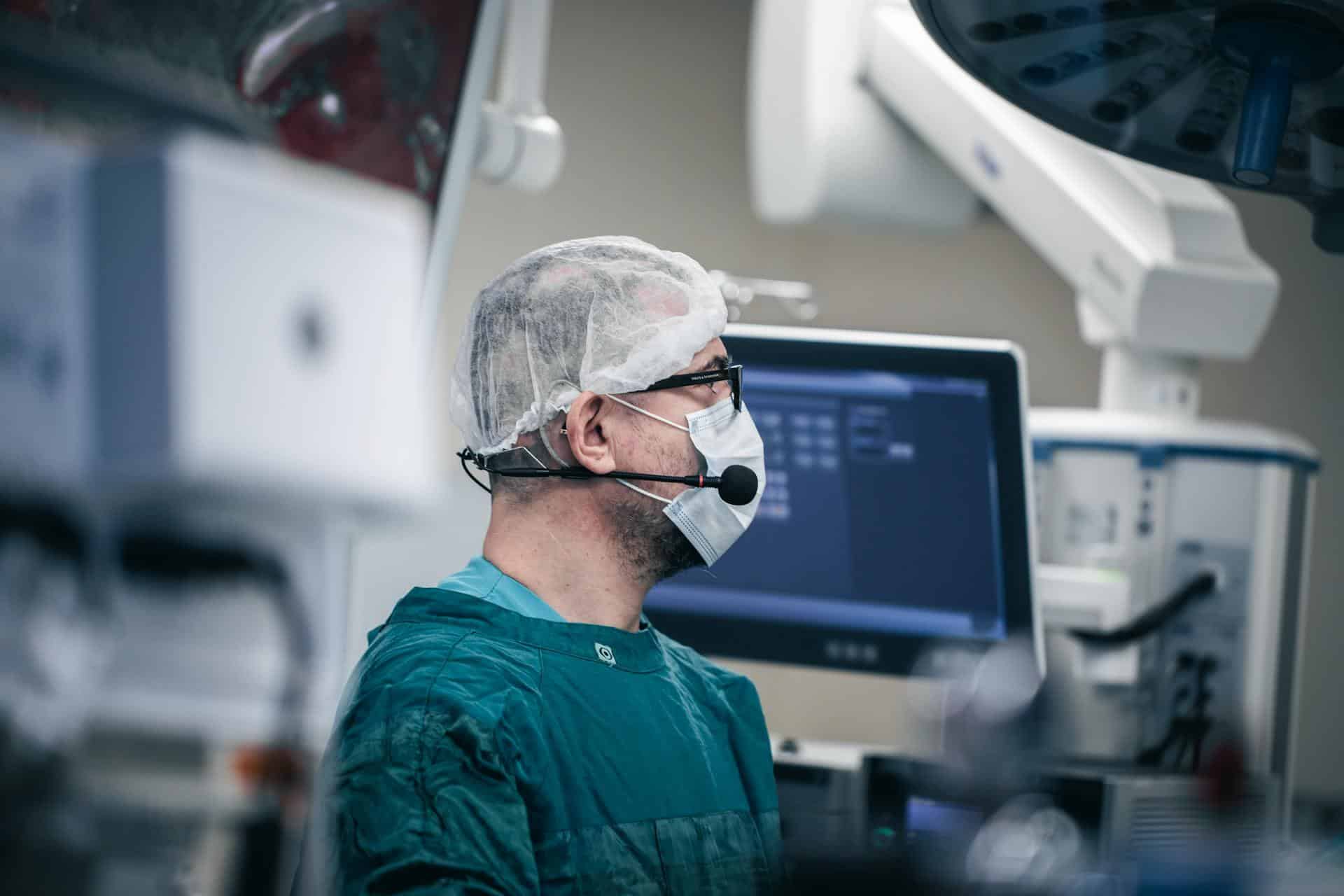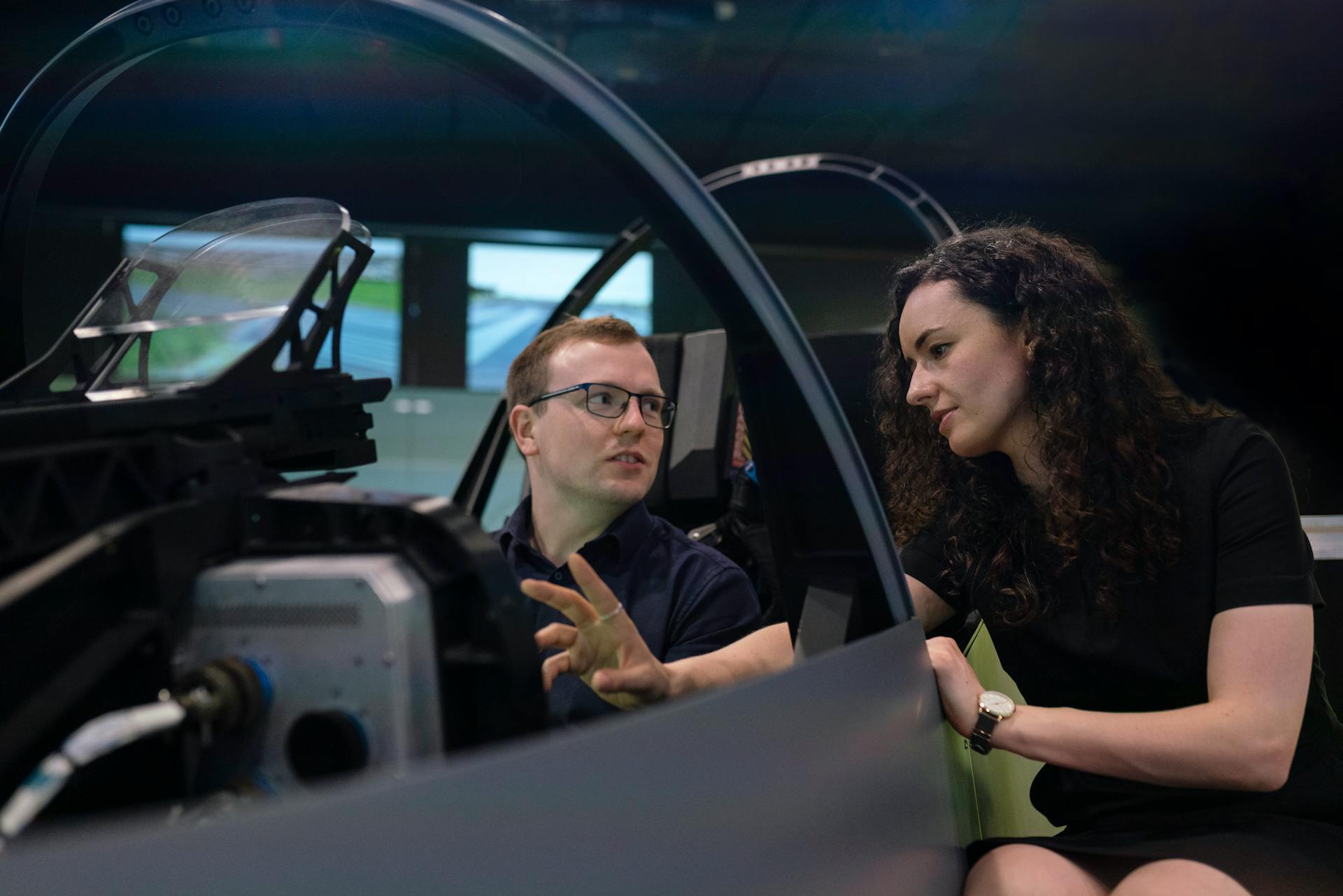Eye Tracking vs EEG: Which Better Detects Cognitive Fatigue?
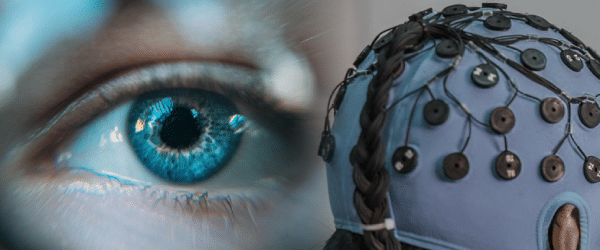
22.04.25 - last update - Adrian Brodesser
Explore the differences between eye tracking and EEG in detecting cognitive fatigue, including their accuracy, setup complexity, and ideal applications.
Eye tracking and EEG are two technologies used to detect cognitive fatigue, each with unique strengths and limitations. Here’s a quick overview:
– Eye Tracking: Tracks visual behaviors like saccades, pupil dilation, and blink patterns. It’s easy to set up, works in real-time, and achieves up to 89% accuracy. However, it struggles in poor lighting and with head movements.
– EEG: Monitors brain activity through electrodes, offering higher accuracy (up to 96.54%) and detecting fatigue earlier. It requires more setup time and is sensitive to noise and interference.

Key Takeaway
Choose eye tracking for ease of use and real-time monitoring in dynamic settings like driving or aviation. Opt for EEG when higher accuracy is critical, especially in controlled environments. For the best results, consider combining both technologies for comprehensive fatigue detection.
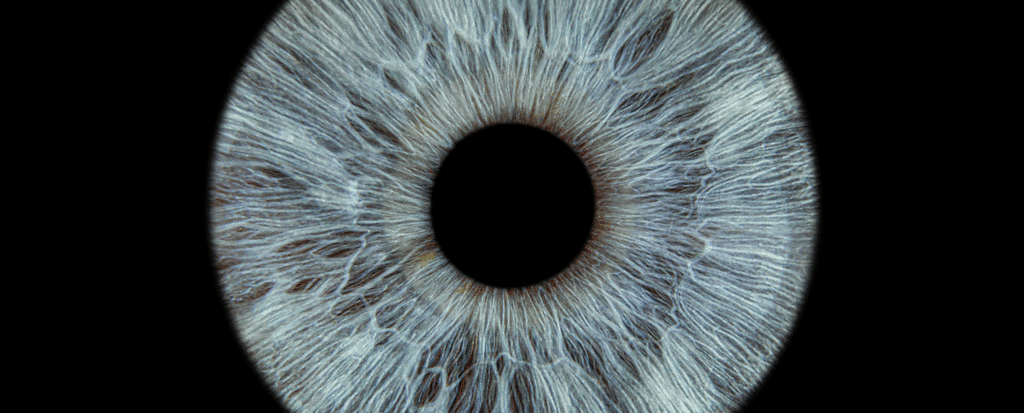
Eye Tracking Methods
Modern eye tracking systems rely on specific metrics to accurately assess cognitive fatigue. Key measurements include saccades, pupillary responses, and blink patterns. Here’s a closer look at each:
Saccade Measurements
Research by Bafna and Hansen highlights that changes in saccade mean and peak velocity can indicate shifts in cognitive states within just 30 minutes [4]. As fatigue sets in, both saccade peak velocity (SPV) and saccade duration (SCD) decrease [5].
Pupillary Response
Cognitive fatigue influences tonic pupil size, which is controlled by the sympathetic and parasympathetic nervous systems. An increase in pupil dilation range (PDR) has been observed in controlled environments, making it a reliable indicator of mental fatigue [4].
Blink Patterns
Fatigue also affects blinking behavior. Both blink duration (BD) and blink frequency (BF) tend to rise as cognitive fatigue progresses [5].
Key Benefits
Eye tracking technology offers practical advantages alongside its precise measurements. SOMAREALITY‘s hardware-agnostic approach demonstrates its flexibility across various platforms. For example:
– A study using smartphone-based eye tracking achieved 80% accuracy (AUC 0.818) with just 75 seconds of gaze data. Extending the tracking to 150 seconds improved accuracy to AUC 0.839.
– In another application, eye tracking achieved 89% recognition accuracy for fatigue detection using the Fuzzy K-Nearest Neighbor (FKNN) algorithm [1].
Current Constraints
While eye tracking has clear advantages, it also faces some challenges:
– Environmental Factors: Dim lighting and head movements can disrupt smooth-pursuit eye movements, impacting performance [7].
– Data Consistency: Experimental conditions can vary, leading to inconsistent data [4].
– Technical Limitations: Smartphone-based systems show model errors ranging from 0.420 to 0.491 cm, with angular accuracy between 0.6° and 1.1°. Additionally, the current system acceptance rate is about 50% [6].
These limitations are particularly noticeable in real-world scenarios where ideal conditions are hard to maintain.
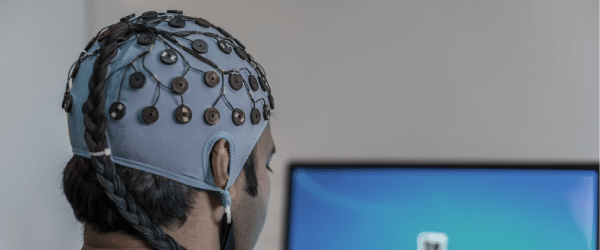
EEG Measurement Systems
EEG systems track several important indicators:
Brainwave Frequency Bands: These bands reflect different cognitive states:
– δ (1–3 Hz): Associated with sleep.
– θ (4–7 Hz): Linked to fatigue.
– α (8–12 Hz): Indicates an awake but relaxed state.
– β (15–20 Hz): Tied to emotional changes.
– γ (40+ Hz): Signals an excited state.
Event-Related Potentials (ERPs): These amplitudes typically fall between 2 and 10 microvolts. The P300 component, in particular, decreases as cognitive fatigue increases [8].
Key Benefits
EEG systems bring several advantages when it comes to detecting cognitive fatigue:
High Temporal Resolution: EEG can detect neurological changes in milliseconds, making it ideal for real-time monitoring in critical situations [2].
Direct Brain Activity Measurement: Unlike methods that rely on behavioral cues, EEG provides direct insights into neural activity. For example, researchers at Beijing Normal University achieved a mind-wandering detection accuracy of 0.66 AUC by analyzing seven neural features [9].
Faster Setup with Mobile Systems: Modern portable EEG setups reduce preparation time to under 7 minutes, compared to the 20–40 minutes needed for traditional systems, all while maintaining research-level data quality [8].
These advantages, however, are balanced by certain technical challenges.
Technical Limitations
Despite its strengths, EEG systems face several hurdles:
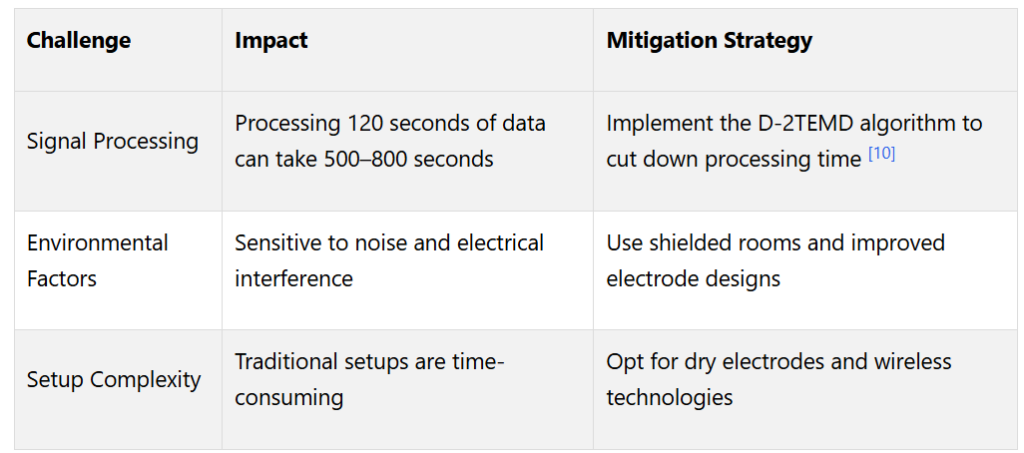
Other notable challenges include:
Signal Quality: Multiscale permutation entropy (MPE) helps remove artifacts while maintaining detection accuracy [9].
Individual Differences: EEG signals vary widely between people, requiring advanced calibration. Adaptive machine learning algorithms are becoming more common to address this, though this area is still evolving [9].
Direct Comparison: Eye Tracking vs EEG – Detection Accuracy
Eye tracking has demonstrated an accuracy rate of 89% [1], while EEG analysis using CNN models has reached a higher accuracy of 96.54% in detecting fatigue [11].
SOMAREALITY’s system, which works with various hardware, tracks cognitive states in real-time, though its accuracy data hasn’t been disclosed. Interestingly, one study noted that eye tracking responded 36 milliseconds faster than EEG [14]. Eye tracking also has the advantage of simpler calibration for pupil differences, unlike the more intricate electrode placement required for EEG.
These differences highlight the contrasting demands of each technology during operation.
Setup and Operation
Eye tracking is straightforward, using cameras and software calibration, and integrates easily with standard displays [12]. A practical example is General Motors‘ use of an infrared eye-tracking system in the 2018-2019 Cadillac CT6 to monitor driver attention [13].
In contrast, EEG involves a more involved setup, requiring accurate electrode placement and signal calibration. Synchronizing EEG data with stimuli can also be challenging [12].
Investment and Scaling
When it comes to cost and scalability, eye tracking stands out. The hardware for eye tracking is now priced similarly to EEG accessories [12]. For industries like automotive and aviation, eye tracking is a practical, cost-efficient option for integration and scaling. While EEG is still considered the benchmark for cognitive assessment, its use in real-time environments is hindered by challenges in recording and analysis [13].
Selection Guide
When deciding between eye tracking and EEG, consider these factors:
Accuracy: Eye tracking offers approximately 89% accuracy but can be affected by lighting conditions. EEG provides more stable cognitive markers but requires an interference-free environment for optimal performance [1] [3].
Implementation: Eye tracking is easier to deploy in everyday scenarios, while EEG is better suited for controlled environments due to its more complex setup [3].
Budget: Eye tracking involves minimal training and maintenance, keeping costs lower. EEG, on the other hand, requires specialized expertise, which increases operational expenses.
These factors help determine the best fit for various industries.
Industry Applications
Healthcare Sector
Eye tracking is used for:
– Monitoring patient fatigue during rehabilitation programs
– Evaluating the alertness of medical staff during extended shifts<
– Performing non-invasive cognitive assessments
Aviation Industry
Eye tracking plays a critical role in:
– Monitoring pilot fatigue during long-haul flights
– Assessing the alertness of air traffic controllers in real time
– Enhancing training simulations for fatigue management
Automotive Applications
Fatigue contributes to 15–20% of fatal traffic accidents [1]. In the automotive industry, different technologies serve unique purposes:

Combined Systems
For industries requiring precise fatigue monitoring, combining eye tracking and EEG offers a balanced approach. This integration merges visual data with neural insights, improving the reliability of fatigue detection.
Integration Benefits
– Combines visual and neural data for a thorough fatigue assessment
– Cross-validates fatigue indicators, boosting detection accuracy
Implementation Requirements
– Ensures hardware compatibility between systems
– Requires strategic placement of electrodes and sensors<
– Demands synchronization of data from both technologies
Choosing between these technologies depends on your specific needs, but integrated systems provide a more thorough solution for scenarios where precision and reliability are critical.
Conclusion
Eye tracking observes visual behavior to detect fatigue, while EEG focuses on brain activity. This core difference influences how each method is applied and their overall effectiveness.

These differences are key when deciding which approach fits your needs.
Next Steps
Using the insights from this comparison, here’s how to move forward:
Assess Your Environment
Eye tracking works well in dynamic spaces like vehicle cabins, while EEG is better suited for controlled environments. For example, aviation studies show eye tracking can detect fatigue without disrupting tasks [15].
Think About Integration
Combining both technologies can increase detection accuracy by 15% [12].
Match the Technology to Your Industry
In fields where fatigue contributes to 15-20% of fatal accidents [1], choosing the right tool is critical. Eye tracking offers an easier setup and minimal interference with ongoing operations.
“Eye tracking can be a non-intrusive viable approach that does not require the pilots to pause their current task, and the device does not need to be in direct contact with the pilots.”
– Salem Naeeri, Ziho Kang, Saptarshi Mandal, Kwangtaek Kim [15]
Combining physiological data sources can further improve accuracy [3]. Select the solution that aligns with your operational priorities and safety goals.
Stay up to date with everything around Soma
Stay informed with the latest updates and breakthroughs in eye-tracking technology.
